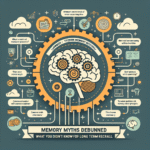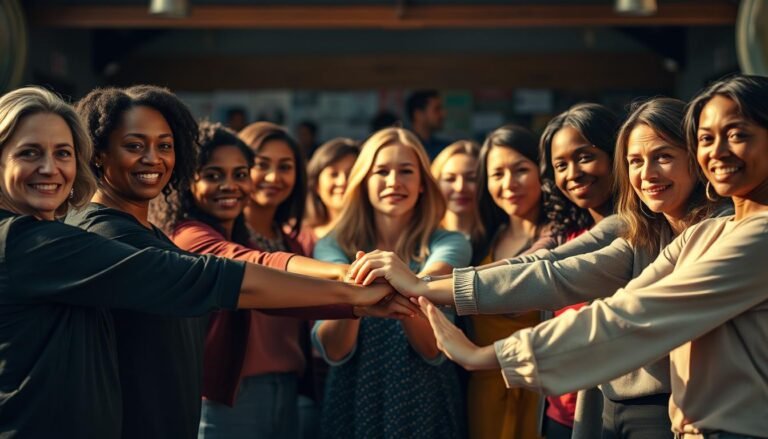
Can clothes be more than just fashion? For some, clothing choices are a strong way to deal with life’s tough times.
Cross-dressing is complex, with many reasons and experiences. It includes feeling comfortable, expressing identity, and meeting psychological needs. We’ll look at how cross-dressing helps with emotional self-regulation and self-expression.
By studying cross-dressing and coping, we learn how clothes help people express and manage their feelings.
Key Takeaways
- Cross-dressing can help people cope with big life challenges.
- Clothing choices are a strong way to manage emotions.
- Cross-dressing is complex, with many reasons and experiences.
- Seeing cross-dressing as a coping mechanism helps us understand its role in emotional expression and management.
- Looking at cross-dressing and self-expression shows its importance in personal identity.
Understanding Catastrophic Loss and Its Impact
Experiencing a catastrophic loss can cause a lot of emotional pain. It’s when something sudden and unexpected happens, like losing a loved one or getting a serious health diagnosis. It can also happen when there’s a big change in life.
Defining Catastrophic Loss
Catastrophic loss is very severe and changes a person’s life a lot. It can make it hard for someone to function normally. It can also cause a lot of emotional and psychological reactions.
What is considered a catastrophic loss can depend on the situation. But it usually means something very traumatic that affects a person for a long time. Knowing what catastrophic loss is helps us find ways to cope better.
Psychological Effects on Individuals
The effects of catastrophic loss on the mind can be different for everyone. People might feel shocked, deny it, get angry, or feel very sad. How long and how strong these feelings are can vary a lot.
Some common effects include feeling anxious, depressed, or even getting PTSD. These effects can really hurt a person’s mental health. It can make their life and happiness suffer a lot.
Common Responses to Grief
Everyone grieves in their own way, and there’s no one “right” way to do it. Some people might cry a lot, feel guilty or angry, or even change how they eat or sleep.
| Response to Grief | Description | Impact on Individual |
|---|---|---|
| Emotional Outbursts | Intense feelings of sadness, anger, or frustration. | Can be overwhelming and affect relationships. |
| Withdrawal | Pulling back from social interactions and activities. | Can lead to feelings of isolation. |
| Physical Symptoms | Changes in appetite, sleep disturbances, or fatigue. | Affects overall health and well-being. |
It’s important to understand these grief responses to help those who have experienced catastrophic loss. By knowing how people grieve, we can support them better in their healing journey.
The Role of Cross-Dressing in Coping Mechanisms
For centuries, cross-dressing has been a way for people to cope with their feelings. It lets them express themselves in a new way. This practice is found in many cultures and helps people release their emotions.
Historical Perspectives on Cross-Dressing
Cross-dressing has been around for ages. It was seen in ancient Greece and Rome, where it was tied to rituals and theater. In many places, it was not just accepted but also valued, showing its role in society and personal expression.
Records show that during wars, women dressed as men to fight. This shows how cross-dressing can be flexible and helpful.
| Culture | Historical Context | Role of Cross-Dressing |
|---|---|---|
| Ancient Greece | Theater and Rituals | Expression and Storytelling |
| Ancient Rome | Theater and Festivals | Social Commentary and Satire |
| Various Cultures | War and Conflict | Camouflage and Survival |
Cross-Dressing as a Form of Release
For many, cross-dressing is a way to express feelings they can’t share in their usual life. It’s a healthy way to deal with stress, anxiety, and grief.
Personal Anecdotes: Coping Through Transformation
Many people find cross-dressing helps them cope with loss. They feel free and empowered. For example, dressing differently can symbolically separate them from their sorrow.
These stories show how cross-dressing can help with healing. It’s a powerful tool for dealing with tough emotions like loss and guilt.
Guilt and Shame Associated with Loss
Loss often brings a mix of emotions, including guilt and shame. These feelings can deeply affect how we grieve. They can change how we deal with our loss.
The Nature of Guilt in Grief
Guilt is a common feeling after loss. It comes from regret or feeling responsible for the loss. It’s hard when we think about what we could have done differently.
For example, someone might keep thinking about actions they could have taken to stop the loss. This thinking can make guilt worse, making grieving harder.
Cultural Factors Influencing Guilt
Culture and society shape our guilt feelings. Different cultures have different rules for showing emotions and what feelings are okay.
| Cultural Factor | Influence on Guilt | Example |
|---|---|---|
| Collectivist Cultures | Focus on family and group harmony, leading to more guilt about not protecting or supporting. | In some Asian cultures, not caring for an elderly family member can cause a lot of guilt. |
| Individualistic Cultures | Stress personal responsibility, making guilt over personal failures worse. | In Western societies, feeling guilty for not reaching personal goals or feeling like a failure is common. |
How Cross-Dressing Can Mitigate Shame
Cross-dressing can help those feeling shame from loss. It lets people express themselves in a way that feels true to them. This can lessen the negative feelings of shame.
Through cross-dressing, people can feel free and powerful, fighting off shame. It’s a healthy way to deal with complex emotions during grief.
Self-Expression and Its Importance
Self-expression is a key tool in healing. It lets people share their feelings and experiences in meaningful ways. This is very important for those dealing with loss and grief.
Therapeutic Benefits
Self-expression has many benefits. It helps people understand and process their grief. Self-expression allows for emotional release, helping to deal with feelings in a healthy way.
It also gives people a sense of control and empowerment. Creative expression helps them grow and find new meaning in their experiences.
Exploring Creative Outlets
There are many ways to express oneself beyond just clothes. Art therapy, for example, lets people share complex emotions. Writing, painting, and sculpting are just a few ways to express oneself.
- Journaling as a means of reflective writing
- Engaging in visual arts like painting or drawing
- Participating in performance arts such as dance or theater
The Vital Role of Self-Expression in Healing
Self-expression is essential in healing. It lets people share their feelings and experiences in a personal and meaningful way. By expressing themselves, individuals can better navigate grief and loss, leading to recovery.
| Form of Self-Expression | Benefits |
|---|---|
| Art Therapy | Facilitates emotional release, promotes personal growth |
| Writing | Enhances reflective processing, provides an outlet for emotions |
| Performance Arts | Encourages expression through movement, fosters empowerment |
Community and Support in Cross-Dressing
Community support is key for those who use cross-dressing as a coping method. Both online and offline groups offer a sense of belonging and acceptance. This is vital for individuals.
Finding Support Groups
Finding support groups is a big step for those seeking community. Look for them at local LGBTQ+ organizations, mental health networks, or online cross-dressing platforms.
- Local LGBTQ+ centers host support groups for gender identity exploration.
- Online forums and social media groups connect individuals with similar experiences.
- Mental health professionals can suggest support groups tailored to your needs.
The Role of Online Communities
Online communities are now essential for support. They allow for sharing experiences, advice, and solidarity with others who understand cross-dressing.
Benefits of online communities include:
- Accessibility: Connect with others worldwide.
- Anonymity: Safe spaces for those not ready to be open.
- Diversity: A wide range of experiences and perspectives.
Establishing Safe Spaces for Expression
Creating safe spaces, online and offline, is critical. It’s about fostering an environment where individuals feel free to express themselves. This means setting clear guidelines for respect and understanding.
Key elements of safe spaces include:
- A non-judgmental atmosphere for self-expression.
- Clear boundaries and guidelines for respect.
- Chances to share experiences and learn from others.
Exploring Identity Through Cross-Dressing
Cross-dressing is a unique way to cope with grief and loss. It helps with identity exploration. This journey involves understanding oneself deeply.
Gender Fluidity and Self-Discovery
Gender fluidity is key in exploring identity. People try different gender expressions to find themselves. Cross-dressing lets them break free from traditional gender roles.
This journey is more than just changing clothes. It’s about exploring emotions, thoughts, and social roles. It’s a powerful way to express oneself.
Cross-Dressing as a Form of Identity Exploration
Cross-dressing is a safe space for identity exploration. It’s very important during grief. It lets people express feelings and parts of themselves they can’t usually.
- It lets people try out different gender roles.
- It helps cope with the emotions of loss.
- It helps understand one’s identity better.
The Intersection of Grief and Identity
Grief can change how we see ourselves. Cross-dressing can help navigate this change. It lets people explore new sides of themselves as they heal.
Using cross-dressing to express oneself can help cope with loss. It helps integrate experiences into one’s growing identity. This can be healing and promote personal growth.
The Connection Between Loss and Transformation
Loss can deeply change a person, making them look at life in a new way. It’s a complex mix of the emotional impact of loss and the growth that follows. This mix can lead to big changes in a person’s life.
Transformation as a Healing Process
After a big loss, transformation is key to healing. It helps people deal with their grief and find a new purpose. Dr. Elizabeth Kübler-Ross said, “The wound is the place where the light enters you,” showing how adversity can lead to growth.
The healing journey has different stages, like denial and acceptance. During these times, people can start to see their experiences in a new light. They find new meaning in their lives.
Stories of Personal Transformation
Many stories show how loss can lead to change. For example, some people turn to cross-dressing as a way to express themselves and cope. One person said, “Cross-dressing helped me explore myself and find comfort during tough times.”
“The greatest glory in living lies not in never falling, but in rising every time we fall.” –
How Loss Can Inspire Change
Loss makes people rethink their priorities and values. This can lead to big changes in how they live and express themselves. Cross-dressing can be a way to deal with emotions and move through grief.
By embracing change, people can heal and grow. They find new ways to understand themselves and become stronger. This journey helps them see themselves in a new light.
Addressing Stigmas Surrounding Cross-Dressing
Understanding cross-dressing requires looking at its cultural and psychological sides. It’s often seen as a way to express oneself and cope with tough times. But, many people don’t get it because of what society thinks and what they’ve been told.
Common Misconceptions
Many think cross-dressing is only for people who are gay or transgender. But, studies show it’s more about expressing oneself and dealing with loss, not about being gay.
Some also believe cross-dressing is a new thing. But, history shows it’s been around for ages. It’s been used for spiritual reasons, in theater, and to make social points.
Navigating Societal Norms
Societal norms affect how we see cross-dressing. In many places, strict gender roles are common, leading to bias against those who don’t fit in. Finding a balance between being true to oneself and fitting in is hard.
To change these norms, we need to talk and learn from each other. Hearing the stories of those who cross-dress helps us understand and feel for them.
| Societal Norm | Challenge | Outcome |
|---|---|---|
| Traditional gender roles | Education and dialogue | Increased acceptance |
| Prejudice against non-conformity | Promoting diverse stories | Greater empathy |
Advocating for Acceptance
To support cross-dressing, we must fight wrong ideas and push for understanding. This means teaching, getting involved in the community, and backing those who cross-dress.
By celebrating different ways of expressing ourselves, we can build a society that welcomes everyone. Where people can be themselves without fear.
Cross-Dressing: A Journey of Self-Acceptance
Cross-dressing can change a person’s life, helping them face and beat societal rules. This path is personal and different for everyone.
Embracing One’s True Self
Accepting oneself is key to healing. Cross-dressing lets people explore their identity, helping them understand themselves better. This self-discovery is important for self-acceptance, as it lets people show who they really are.
Through cross-dressing, people try out different styles and roles. They find what truly makes them feel real. It’s not just about clothes; it’s about being true to oneself.
The Role of Fashion in Self-Identity
Fashion shapes self-identity. The clothes we wear change how we see ourselves and how others see us. For many, cross-dressing lets them express parts of themselves that traditional gender norms don’t allow.
- Fashion as a form of self-expression
- The impact of clothing on self-perception
- Exploring identity through different styles
Using fashion to express oneself lets people share their true identity. This helps them feel more connected to who they are inside and out.
Overcoming Internalized Norms
One big challenge is beating internalized norms and societal expectations. Cross-dressing can help people challenge these norms, freeing them from traditional gender roles.
This journey is not just about getting others to accept you. It’s also about accepting yourself. By embracing who they are, people can overcome shame and guilt for not fitting societal norms.
The path to self-acceptance through cross-dressing is unique for each person. It involves expressing oneself, exploring identity, and challenging societal norms. Many find healing and a deeper understanding of themselves on this journey.
Practical Tips for Coping Through Cross-Dressing
Cross-dressing can be a way to express yourself and find comfort during tough times. It helps people explore their feelings and find ways to cope with loss and identity issues.

Finding Your Style
Finding your style in cross-dressing takes time and patience. Start by figuring out what makes you feel good about yourself. Try out different styles and shapes to see what fits you best.
- Start small by adding bits of your style to what you already wear.
- Play with makeup and accessories to boost your confidence.
- Look for inspiration online or in support groups where people share their experiences.
Tips for First-Time Cross-Dressers
Starting out in cross-dressing can feel overwhelming. Know your goals to make it easier. Whether you want to show a different side of yourself or just have fun, knowing what you want helps.
- Practice in a place where you feel safe, like your home.
- Get a few key items that make you feel good and expressive.
- Join online forums or local groups for advice and support.
Dressing for Empowerment
Dressing for empowerment is more than just clothes; it’s about being true to yourself. Wearing what feels right to you can boost your confidence and self-assurance.
To dress for empowerment, focus on:
- Choose clothes that make you feel strong and confident.
- Try different styles to find what shows your personality.
- Be yourself and ignore rules that limit how you express yourself.
By using these tips, you can use cross-dressing to heal and discover yourself.
Case Studies: Individuals Who Found Healing
We share inspiring stories of people who found healing through cross-dressing after facing huge losses. These stories come from interviews and personal experiences. They show how cross-dressing helped them cope, find comfort, and express themselves.
Interviews with Cross-Dressers
We talked deeply with people who used cross-dressing to deal with their loss. Their stories show how this self-expression helped them heal.
“Cross-dressing allowed me to express emotions I couldn’t verbalize,” one person said. “It was a safe space to explore my feelings and find comfort.” Their words highlight the healing power of cross-dressing.
Lessons from Their Experiences
These stories teach us important lessons. One key lesson is the value of a supportive community. People who found acceptance in cross-dressing groups felt more satisfied with their coping method.
| Lesson Learned | Description |
|---|---|
| Community Support | Acceptance within cross-dressing communities enhances the coping experience. |
| Personal Expression | Cross-dressing allows for a healthy outlet of emotions related to grief. |
| Empowerment | Individuals feel more in control of their emotions and identity. |
The Power of Sharing Stories
Sharing cross-dressing stories helps people deal with their grief and builds a sense of community. It encourages others to be true to themselves and find strength in their expression.
Therapeutic Approaches Incorporating Cross-Dressing
Using cross-dressing in therapy can help people understand themselves better. It can also aid in healing. This method is used to address grief, guilt, and self-expression.
Art Therapy and Self-Expression
Art therapy includes activities like drawing and painting. It’s great when combined with cross-dressing. This way, people can express feelings without words.
For example, someone might draw themselves in different clothes. This shows different parts of their personality or emotional journey. It helps them understand themselves better and feel more accepted.
Counseling Techniques Focusing on Grief
Counseling for grief can be helped by cross-dressing. It lets people express their feelings through clothes or personas. This is good for those who find it hard to talk about their feelings.
This method creates a safe space for people to deal with their grief. Counselors help clients find ways to cope with loss, using cross-dressing as a tool for healing.
Holistic Approaches to Healing
Holistic healing looks at the whole person – body, mind, and spirit. Cross-dressing can be part of this. It helps in healing and finding oneself.
| Therapeutic Approach | Key Components | Benefits |
|---|---|---|
| Art Therapy | Creative activities, cross-dressing | Enhanced self-expression, emotional exploration |
| Counseling Techniques | Grief-focused counseling, cross-dressing | Effective emotional processing, coping strategies |
| Holistic Approaches | Physical, emotional, spiritual well-being, cross-dressing | Comprehensive healing, self-discovery |
Cross-Dressing and Mental Health
Looking into how cross-dressing affects mental health shows us interesting ways people cope. Cross-dressing lets people express themselves, which can greatly improve their mental state. It’s important to see how it can both comfort and help with deeper psychological problems.
Addressing Anxiety and Depression
Anxiety and depression are big challenges for many. Cross-dressing can be a way to take a break from daily stress. It can be a form of therapy, letting people express feelings they might hide. Studies show it can lower anxiety and boost mood.
But, it’s key to remember cross-dressing isn’t a replacement for professional help. If you’re struggling with anxiety or depression, you should talk to a mental health expert.
“The freedom to express oneself through clothing can be a powerful tool in managing mental health.” – Dr. Jane Smith, Psychologist
The Role of Professional Help
Getting help from professionals is vital for mental health. Therapists can help people use cross-dressing as part of their treatment. They can help find the reasons behind anxiety or depression and teach ways to deal with them.
Here’s a table showing the benefits of getting professional help and using cross-dressing as a tool:
| Therapeutic Approach | Benefits |
|---|---|
| Professional Counseling | Addresses underlying mental health issues, provides coping strategies |
| Cross-Dressing as Therapy | Offers a means of self-expression, can reduce anxiety and depression |
| Combined Approach | Enhances therapeutic outcomes, promotes holistic healing |
Building Resilience Through Expression
Building resilience is key for good mental health. Cross-dressing can help by letting people express themselves and feel empowered. Exploring different identities can make people stronger and better at handling life’s ups and downs.
Here are some steps to build resilience through expression:
- Identifying personal style and preferences
- Experimenting with different forms of expression
- Seeking support from communities or professionals
- Reflecting on the experience and its impact on mental health
In conclusion, cross-dressing and mental health are connected in many ways. Cross-dressing can be a great way to cope and express oneself. But, it’s also important to tackle deeper mental health issues with professional help. By using both, people can become more resilient and work towards healing.
Advocating for Understanding and Acceptance
To create a culture of understanding and acceptance, we need to talk, learn, and spread awareness. We must tackle the complexities of cross-dressing and its role in dealing with loss, guilt, and self-expression. This is key to building a more inclusive society.
Ways to Foster Dialogue
Starting conversations is vital for understanding and acceptance. We can do this through community events, online forums, and support groups. These spaces allow people to share their stories and views.
Effective dialogue means listening well and being open-minded. It helps us clear up stigmas and wrong ideas about cross-dressing. For example, community-based initiatives help people share their stories, building a sense of community and understanding.
The Importance of Education
Education is key to acceptance and understanding. By teaching about cross-dressing in schools, we can raise awareness early. This helps clear up myths and misconceptions, making our environment more inclusive and accepting.
Also, educational efforts offer resources for those exploring cross-dressing. They provide guidance on safe practices and the value of self-expression in mental health.
Campaigns for Acceptance and Awareness
Awareness campaigns are vital for highlighting the need for acceptance and understanding. They can be social media campaigns or public events, all aimed at raising visibility and promoting acceptance. By sharing the stories of those who cross-dress, these campaigns humanize the practice and show its importance in dealing with grief and self-expression.
By combining dialogue, education, and awareness campaigns, we can strive for a society that better understands and accepts cross-dressing. Through these efforts, we can build a culture of empathy and support. This allows individuals to express themselves freely and authentically.
Conclusion: Embracing Transformation Through Grief
The journey to healing is complex and never-ending. Cross-dressing has become a key tool in this healing journey. It helps people deal with the pain of loss and guilt by finding new ways to express themselves.
Navigating the Path to Healing
Exploring cross-dressing can help people release their grief and find themselves. This ongoing process helps them see their experiences in a new light. It deepens their understanding of their feelings and selves.
The Evolution of Coping Mechanisms
Looking ahead, cross-dressing will remain important in helping people through loss and grief. Recognizing the many ways people cope with emotions is key. It helps us build a more understanding and caring world for those healing.

















